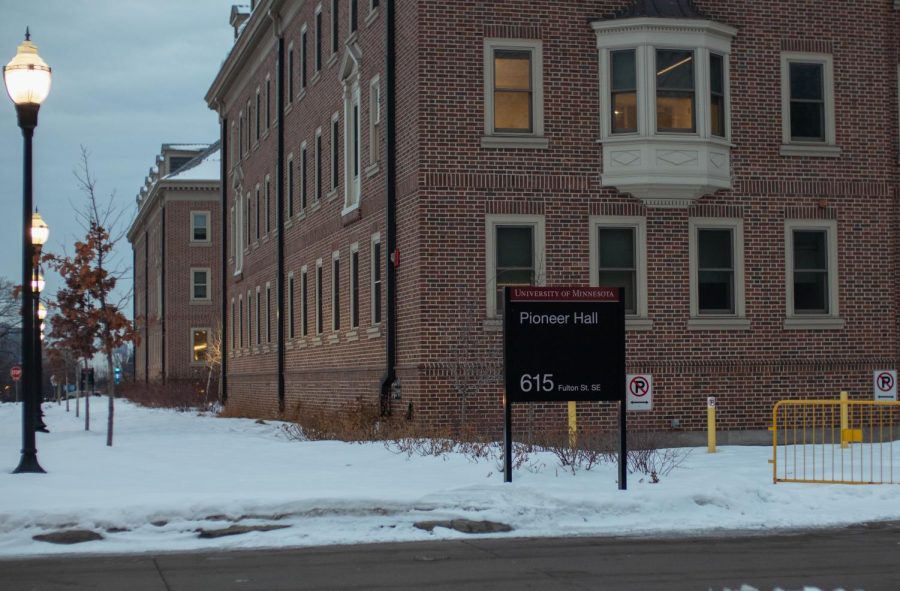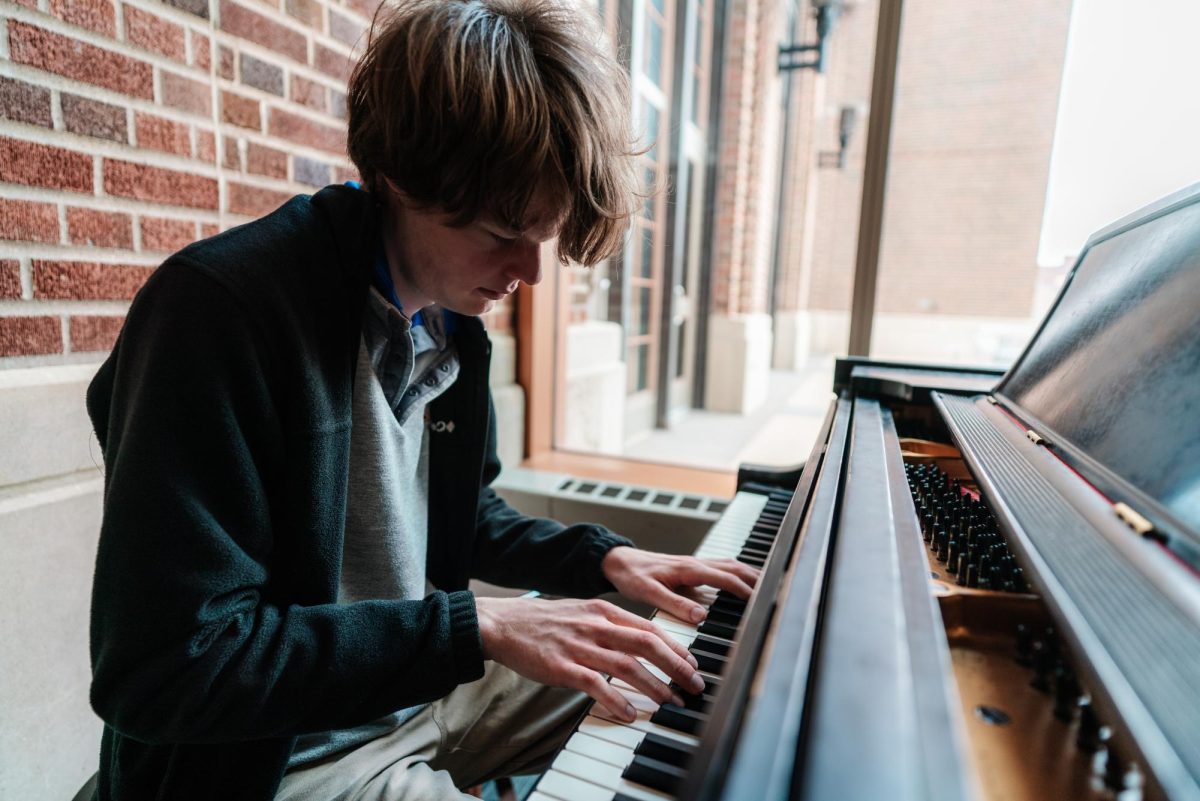Tim O’Malley is 25 years old and living with Down syndrome, among other problems. Most days, he can’t walk on his own. He breathes through a hole in his neck with the help of a tracheostomy tube. For the most part, he doesn’t like to sit up because the tube has weakened his stomach muscles.
Except when he’s horseback riding.
With the help of three volunteers on Tuesday night, O’Malley sat proudly atop his favorite horse, Babe, and waved to his brother, Dan, 27, and sister, Tina, 12, who watched from the stands.
“It really is incredible,” Dan O’Malley said.
Tim has been riding Babe for three years, as a part of a program called “We Can Ride,” hosted by the University of Minnesota’s Leatherdale Equine Center on the St. Paul campus.
The program, founded in 1982, provides therapeutic riding, driving and hippotherapy to children and adults with cognitive, behavioral or physical disabilities, Kate Nelson, barn manager for the Leatherdale location, said.
Hippotherapy is used by physical or occupational therapists who work one-on-one with a client and horse to reach traditional therapy goals without teaching specific riding skills.
The popular program, which serves more than 250 clients annually, currently has a waiting list of more than 100 individuals, according to the program’s website, which is standard for any therapeutic riding program” Nelson said. Leatherdale is one of five locations statewide.
Each class includes three to six clients, each with volunteers to suit their needs.
In a typical hourlong class, instructors lead their clients through stretching exercises, maneuvers such as cone weaving, transitions and different gaits, said Anne Anderson, Tuesday night’s instructor.
Anderson has been a registered instructor since 1999, and was a volunteer with the program for five years before that.
“We always play a game during the class,” Anderson explained. Tuesday’s game, meant to improve social skills, got clients interacting with each other.
In the southwest corner of the arena, Tim passed a paper heart to fellow rider Jessica Wentick — who is 23 and also lives with Down syndrome — while they both sat on their horses.
“[Jessica] loves it,” said her father Ted Wentick . “She wears her boots to work and leaves her helmet by her bed.”
While the weekly class is all about having a good time for the riders, there are specific goals set for each client decided by parents and instructors, which often include making physical improvements.
“They have goals every night,” Anderson said.
While the instructors play a major role in helping clients achieve their goals, it’s the 1,000-pound therapist that really aids the client.
“The horse is really the key,” Nelson said. “I have seen so much growth and progress with pretty much all of the clients I have worked with, and that’s not necessarily due to me or my teaching ability, as much as it is to the horses and that connections they make.”
The horses’ movements have a lot to do with helping the clients improve physically. A horse’s gait, or walk, is similar to what a human experiences while walking unaided. It helps relax spastic muscles, limber segments of the spine, improve posture and challenge balance, according to the program’s website.
Jessica’s mother, Erin Dunn, has seen first-hand the benefits the classes can provide over the six years Jessica has been with the program.
Riding has helped her balance and fine motor skills, Dunn said.
The horses that clients ride aren’t just your run-of-the-mill barnyard ornament. “It takes a very special and very specific horse to be able to be a therapy horse,” Nelson said.
The animals must be able to work with riders who aren’t necessarily able to stay balanced, or might be making a lot of noise and doing a lot with their hands and legs. “They have to be very patient.”
The horses are put through a training period before they get started with the program, during which time trainers ensure the horses can handle the extra activity going on around them.
All of the instructors and volunteers are also trained to handle the horses, as safety is the program’s number one concern.
Nelson has been in classes when a client has had a seizure or another emergency occurs, “and the being who handles [situations like that] the best is the horse,” she said.
In many cases, it is the bond with the horses that keeps clients coming back. While volunteers and walkers work alongside clients and horses, clients steer the animals on their own as much as they can, Anderson said.
Having a bond with their horses allows the rider to work as a team with that horse, but also to see exactly what the results of their actions are, Nelson said.
Whether it’s the instructor or the animal, the program keeps clients coming back for more.
“From the time Tim got home from his work program, he’s been signing, ‘horse,’ Dan O’Malley said. “He just lights up when he gets on her.”
The same is true for Jessica. “I always love my horse,” she said.









